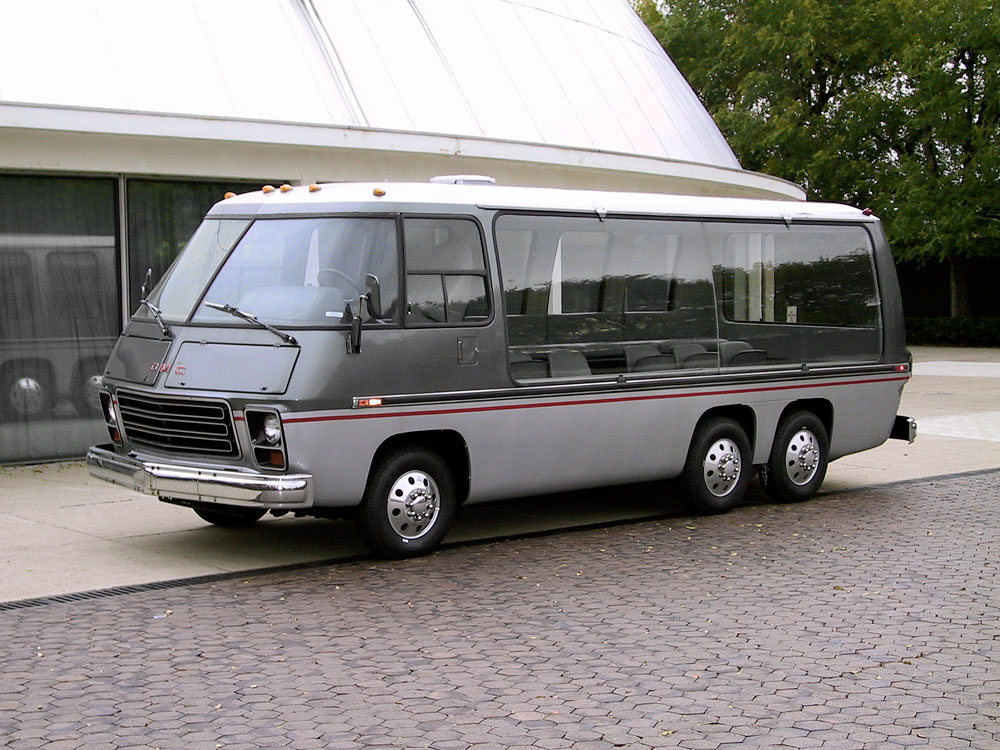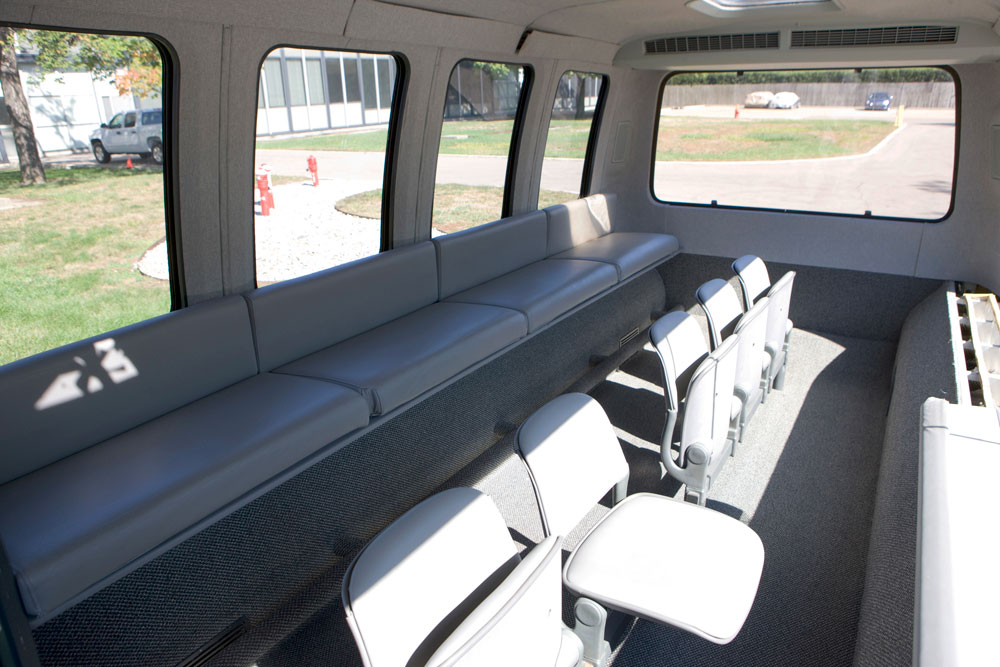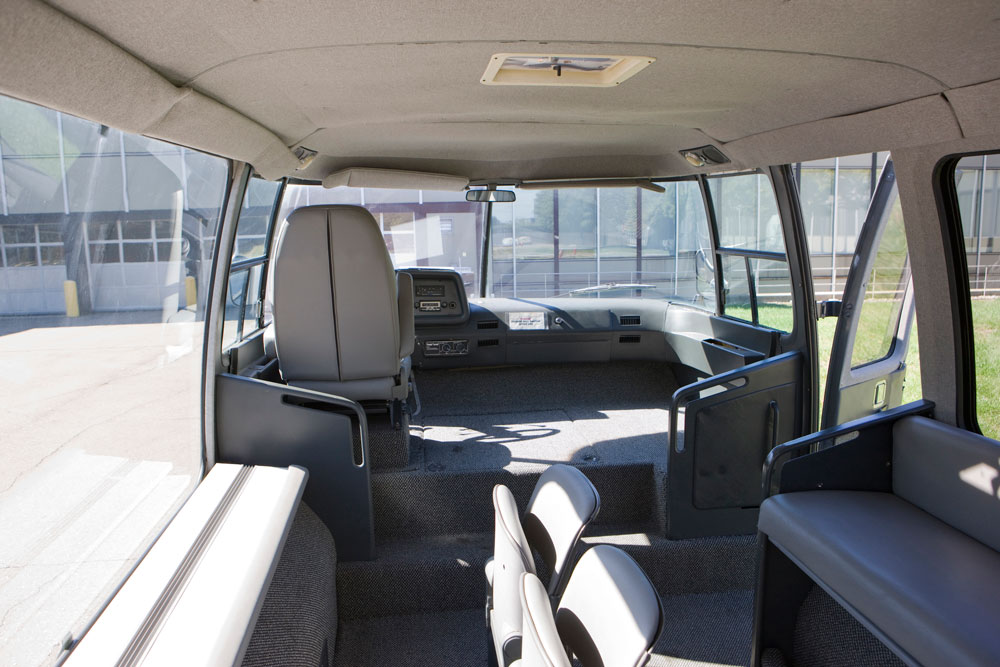New studio stories that aren’t in the Dean’s Garage book.
by Gary Smith
Cold Patio Shows
Michigan in the winter is cold. Sometimes it’s really cold. The damp wind laughs at coats.
One particular winter it seemed like we were constantly having outdoor shows in the patio during the coldest weather. I called the place “Design Station Zebra.”
When a clay model was dragged out and set up on the patio, studio designers, sculptors, and engineers huddled together waiting for the arrival of the upper echelons to make their grand entrance. We had to be ready to jump through hoops in response to arm-waved directions coming from the decision makers; in this case, Irv Rybicki and Jack Humbert.
So the scene was this. After the model was set up in the frozen tundra, we stood around shifting our weight back and forth in an effort to keep from freezing while we waited for the review to begin. An Electra 225 or an Olds 98 sedan eventually drove through the stainless-steel gates that led from the parking lot into the patio. Then the impossibly clean luxury sedan (straight from the heated executive garage), made slow circuits, keeping about 50-feet away from the model. The sedan stopped occasionally. When a rear window went down a few inches, the chief or assistant chief designer scurried over to the car for some instruction about a change to the model. Often the change involved moving a tape line or something, adding a grille bar, or changing a taillight. Positioning a thin tape line on a model with frozen fingers as it fluttered in the icy wind was sometimes impossible because the adhesive on the tape became frozen. Pins would have to be used to secure the tape. Then the window would go back up, and the review continued.
Chuck Jordan wouldn’t ride around in a car even during the coldest reviews. He made his grand entrance bare-headed wearing a full-length, black leather coat open at the neck. Most impressive. I don’t know how he strayed warm.

Army Surplus Arctic Parka
I, however, could not stay warm. I was perpetually cold, and decided that surviving extended excursions on the frigid flight deck was more important than keeping up appearances. I bought a green Army-surplus arctic parka, complete with a fur-edged snorkel hood, at Joe’s Army-Navy in Pontiac, Michigan,
I took it to work and wore it during the next outdoor show.
The show unfolded like this. Chuck and studio supervisors were on the west side of the patio, and the clay model was on the east side.
I had made an Expand-O mock-up that would lengthen the rear overhang a few inches when viewed from across the patio. On their signal, I went over to the car and re-configured the position of the mock-up to show the longer length, then retreated back to my previous location. There I stood, waiting, with the hood in full extension, trying to stay warm.
When the review was over, Chuck, on his way back to the building, walked right up to me, grabbed the edges of the hood from the front, and making reference to the mock-up, said, “You’re quite a fooler!” Wow! A compliment from Chuck!
Ah, memories of Michigan weather.
I used to say, “What this place lacks in heat it makes up in wind.” In 1988 I escaped Michigan and moved to Arizona to get warm.
A summer anecdote about Steve Pasteiner.
by Tom Peloquin
“Steve and I were talking in the studio on a sweltering hot summer day. Even the temperature inside the building was beginning to get uncomfortable. He remarked that ‘even though it was 92-degrees outside, it wasn’t all that bad, because with the wind chill factor it only felt like 89-degrees.‘”

Chuck Jordan’s “ChuckWagon.”
Chuck Jordan had a GMC Motorhome modified so he and other season ticket holders could review models in heated or air conditioned comfort, sheltered from freezing weather or sweltering humidity. Ah, the privileges of rank.
Tom Peloquin on the Chuckwagon
I’m not sure when this GMC motor home was converted into a mobile viewing theater for the Design Center patio, but it was humorously dubbed the “ChuckWagon” shortly after it entered into service (in honor of Chuck Jordan, of course). The execution was first-rate. This can be seen in the curvature of the picture window (to match the cross-section of the body), and in the leather-trimmed theater seats. It provided a comfortable climate-controlled environment for those who were fortunate enough to remain inside during the show. The rest of us were sent out into the bitter cold or sweltering heat to make adjustments to the clay models. The patio was referred to as “Design Station Zebra” in the winter time (referencing the movie Ice Station Zebra). In summer we would say that the weather had “matching numbers” (90 degrees with 90% humidity). Overall, though, I’d have to say I have fond memories of the ChuckWagon.
Photos courtesy of General Motors. For editorial use only. Any commercial or other non-editorial use of the material will require the express written approval of the GM Media Archive.




 There are lots of stories like these in the recently released book, Dean’s Garage: The Future is Back.
There are lots of stories like these in the recently released book, Dean’s Garage: The Future is Back.
Hoping those photos of the “Chuckwagon” are relatively recent. Last I saw it was towards the end of Welburn’s time at Design, and it was look *extremely* rough around the edges…
Oh yes I remember well, makes me cold to think about the time I got kicked out of the RV (Chuck Wagon) to put on a tape line in the middle of winter.
Your worst nightmare was to hear “Get out there and tape the rocker” causing kneeling or lying on the ground in the freezing wet!
Great stories. I liked to drive the “Chuck-Wagon” around the -action when the Pontiac Division managers would have our weekly design reviews. That way I could control how far from the clay model they could view it. They always liked to get too close to the model rather than evaluate it from a ‘normal’ distance.
I can remember sweltering days on the patio during the design reviews. “Can you guys raise that tape line several mills?” Or when it was sub-zero and the winds would make the tape hum at a specific frequency.
Those were the days…
Tom’s story is pretty factual. I recall that the “Chuckwagon” was in service when it was once used to give visitors from PPG a look into the patio. They suggested the large glass window.
It was sent to PPG and it took a couple of months or longer for it to return. When it came back it immediately went into service in the patio. Everyone was impressed. The glass was so heavy that very heavy duty springs had to be put in as the vehicle had a severe list to the drivers side. There was no official driver, someone inside involved in the show would drive it.
Actually what was worse than being outside was to have to go back and forth, inside and out, trying to explain what the designers were doing and while they were doing it get direction to change it and do something else. Back outside you went to tell the poor freezing or sweating designers what was going on. They would not be happy.
Usually what resulted was a merciful realization by those inside that “It is not going to be solved here in the clay”. Famous words by Chuck.
You would be working away like crazy, freezing, etc. and would finally turn around to see the response to what you where doing only to view the back of the van as it drove off for the auditorium or back entrance of the building. You were glad that it was over but understood that you really had achieved very little. Inside it became much easier.
The last time I was in the van I remember the VP of Cadillac wanting to show the President of GM, Lloyd Reusse, the three Seville clay models that we had done and the one chosen. One was a bustle-back that lost the contest to the model that became the production 1992 Seville. Coming in and viewing the three, Reusse natuarally thought he was brought out to make a decision and before John Grettenberger could open his mouth he picked the bustle back as “Clearly the best design”! Everyone was horrified…And speechless! He then left!
It was a disaster as for the first time in two years everyone, Cadillac and Design were in agreement about the design direction and Reusse took it to the model that was the least valid..
It took about three days to get the situation turned around. Chuck came in the next morning and told dennis Little and I that he did not know what to do, he was shell-shocked. Dennis suggested getting Hoglund who he had worked with in Pontiac Studio. He was brought in that afternoon, in his shirtsleeves, to view the situation, he then went to Reuss. Finally when Reusse was told about the situation he said: “No problem, you guys do what you think is right”.
DICK RUZZIN
This story is not about a cold or warm review tale outside the GM Design courtyard, however it is a story about a special one of a kind custom 85 olds Toronado being built for Mr. Jordon at ASC Design and Tech center.
As is the case, anything done for GM but especially for Mr. Jordan was followed closely by Mr. Prechter and of course Mark Trostle Sr. I was following up the Project, custom deep burgandy candy like paint. NO vinyl roof. Custom moldings. Really tailored interior, beautiful rich tan leather color, French seams…front and rear bumpers tucked in a little, beautiful detail…just stunning.
Well Mr. Jordan had a set of custom wheels flown in from Australia…with specific instructions to have HIS special contact source chrome plate these ONE of a kind wheels fabricated just for Mr. Jordan and to have the wheels shipped directly to the plater with specific instructions to CHROME plate and deliver to our team for final assembly. The crowning touch!
Well, the plater dropped the wheels into the tank and apparently there was a meltdown. The Chrome plater called us really upset that we could have had a serious chemical reaction because no one had told him the wheels were Magnesium. (He was just following direction from Mr. Jordan.) The material did not mix in the tank and the wheels basically vaporized.
So as the project was being micro-managed by everybody, this was a major setback for a very special and valued HCP Customer.
Mark Trostle Sr. got on the phone to inform Mr. Jordan that his wheels were GONE! He responded in his very crisp and demanding demeanor instructing us to find them as though they got lost in shipping to the plater…of course Mark unfortunately had to explain his custom made magnesium wheels had vaporized in the chrome plating process.
What a bummer day that was. We had 82 guys in our Tech Center at the time and it took about 2 years for that one to die down. Eventually Mr. Jordan selected another set for his custom ride, however it was a lesson learned the hard way.
Mr. Jordan was tough. Not an ounce of BS. You had to bring your A game. Anyhow it was a great experience, although very humbling.
Yes, the Chrome plater had to get a new tank. The Toronado did turn out to be really beautiful…what a ride!
Now that story had me laughing….out loud! Even my dog came running in to see what the commotion was all about. We did have some fun times, at least looking back it seemed like fun!
The Bustle back Cadillac was designed by Peter Maier.
His sketch was on the wall near the back door of Cadillac Studio. Bill Mitchel was leaving the studio and looked at the sketch and that became the new Cadillac Seville.
I have pictures of the sketch and the designers in Cadillac standing around a clay model/ full size/ with the bustle back
Sketch on the wall. The last Cadillac Seville was designed by
Donald Hronek. Dick Ruzzin came into Cadillac studio after
Wayne Kady the Cheif Designer was transferred to Buick 2 studio. This was about 1989. I can verify the Bustle Back Seville with sketches as mentioned. And the next and last Seville that
Donald Hronek designed can be verified by Charles Dean who
Sculpted the first Scale model under Don’s superivision.
This also can be verified by Wayne Kady.
I was in Cadillac studio as a sculptor from about 1975-6 to 1989.
About a month after Wayne was transferred to Buick Two studio
Dick Ruzzin transferred me there.
Isn’t this the correct time for some of these august gentlemen to do a Dean’s Garage article on the “customized” cars some of the GM Design (and elswhere) honchos drove? I’d love to see that Toro, or better pictures of Mitchell’s “George Barris” Riviera.
Harley Earl started the “Special Car” trend thet still exists by allowing each Chief Designet to have a ‘Special Version’ of one of the cars that they were responsible for to drive on the street. That led to all the special versions of vehicles of all kinds that we have today.
The ‘Chuckwagon’ started as a regular GM Motorhome used in the patio for reviews. Once while romancing the executives from PPG, one of the major glass suppliers, after a nice lunch they were invited to the pato to see aclay model with glass curved in every direction. Just to show them that there was no catching up to us and what they had to do for the future.
During the review in the Chuckwagon one of them suggested a large piece of glass to eliminate the multiple pillars that got in the way of a complete picture. Off the Chuckwagon went to have a special and very large piece of glass created by PPG and fitted which was no easy task. Many pieces were made before the right one arrived. When it came back it leaned heavily to the glass side so the shops, which could do anything, adjusted the suspension to level it out. Everyone was impressed.